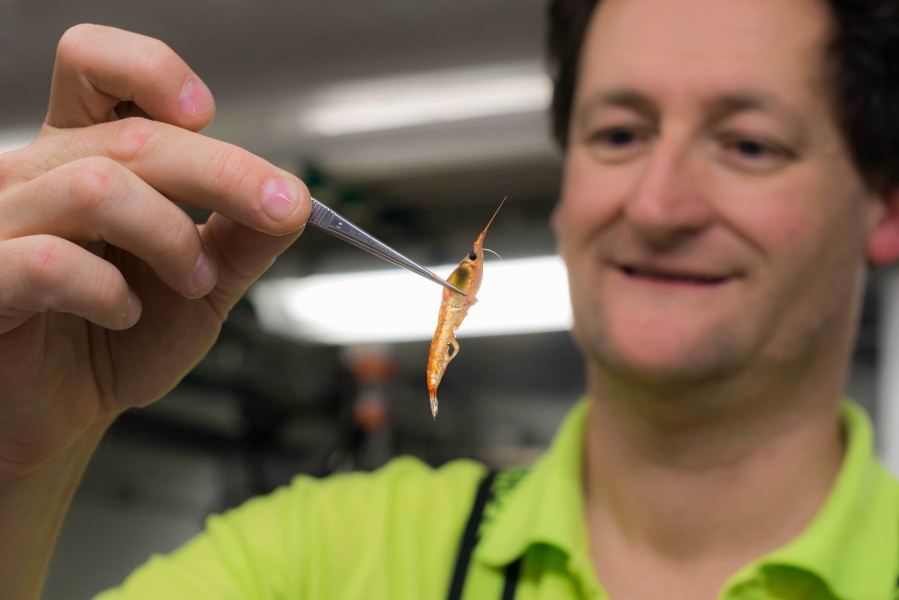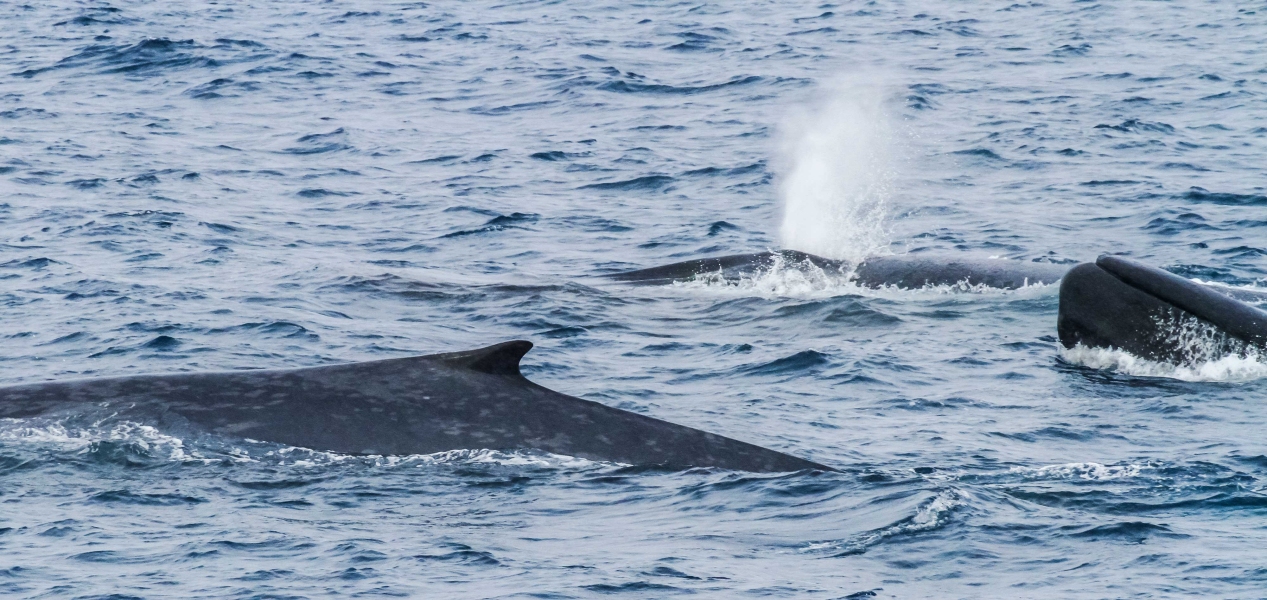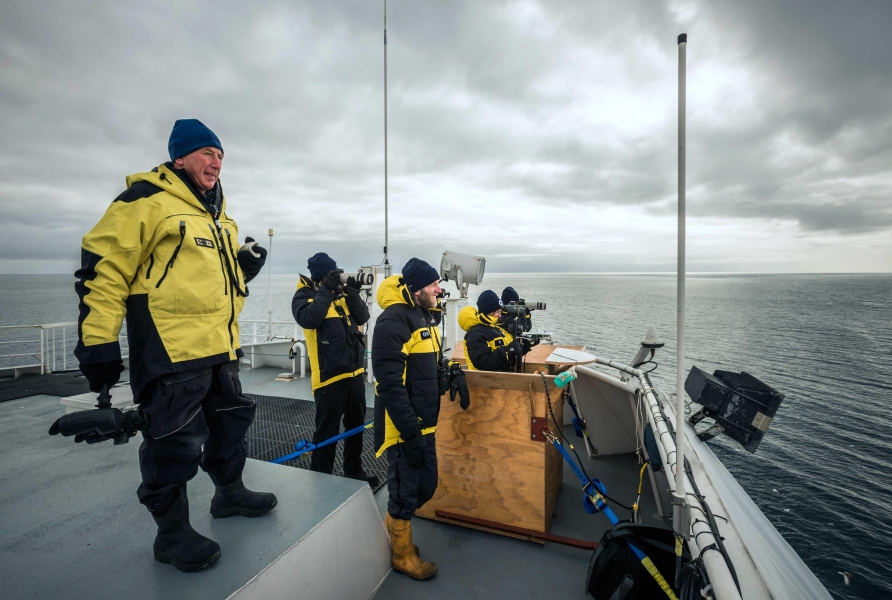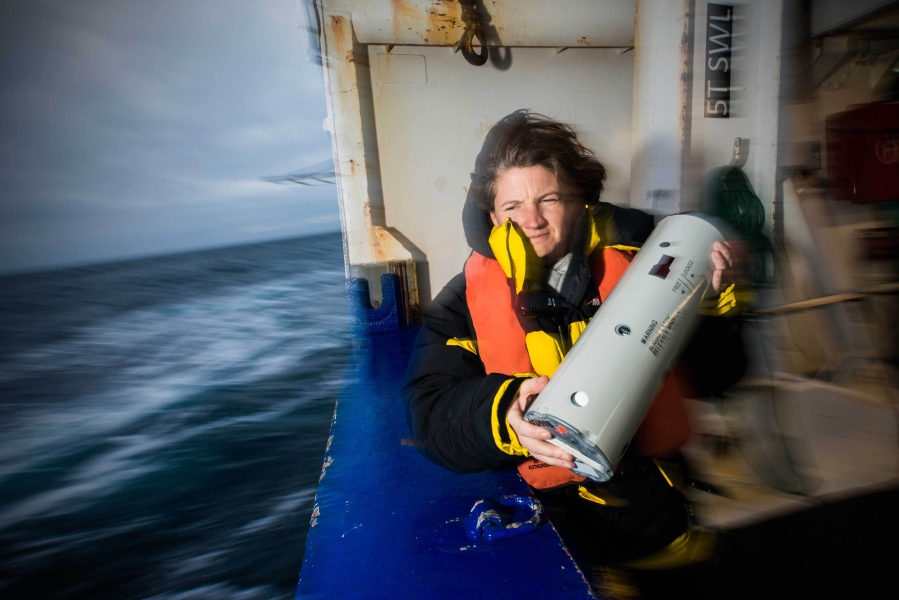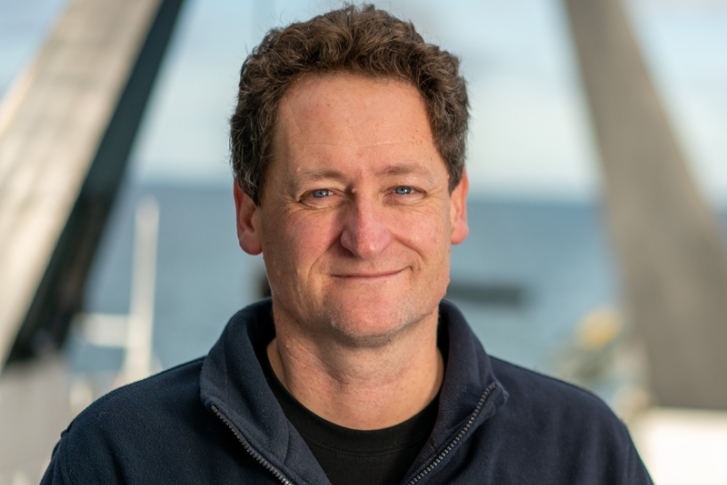NIWA voyage leader Dr Richard O’Driscoll updates the Tangaroa’s encounter with the planet’s largest living beings – the Antarctic blue whales – and discovers what’s on their menu.
Antarctic blue whales were exploited to near-extinction last century by industrial whaling. For the past week we’ve been locating and studying these amazing creatures. The highest densities of blue whales are now found near the edge of the Antarctic sea ice during summer, but are extremely difficult to study in this remote and logistically challenging environment.
Watch the video below to find out more and to see the blue whales in action:
Australian Antarctic Division (AAD) scientists on this voyage are using new passive acoustic techniques that involve listening for and tracking the song of blue whales to find these elusive animals.
Since leaving the Balleny Islands a week ago, the AAD sonobuoys have led us to three groups of blue whales. The largest of these groups, located at about 69° 15’ S 178° 15’ W, turned out to be real ‘hotspot’ with more than 30 blue whales within an area of about 400 square kilometres. This group of animals has been the focus of our efforts for the last five days, with visual and acoustic tracking to record whale behaviour, approaches to photograph individuals for identification and biopsy, and echosounder surveys to map the distribution of krill in the area.
One of the photo-identifications turned up a surprise as we re-sighted one of the two blue whales we saw at the Balleny Islands on 6 February. This whale -- nicknamed Penfold -- must have a real affinity for Tangaroa -- we have now observed him on four of five separate occasions.
The echosounder surveys have shown that very dense, but very patchy, balls of Antarctic krill occur at shallow depths (less than 100 metres) within the blue whale hotspot. These ‘krill balls’ have proven very difficult for us to target with our trawls – we see a ball on the echosounders, but by the time we turn to put the net in the water, the krill have gone! Eventually, after some frustration, we managed to catch some adult krill yesterday
We have all marvelled (and speculated) at the way the whales seem to be able to find and exploit this very patchy food resource. Of course they are much more manoeuvrable than the Tangaroa! And it is certainly worth their while. Our preliminary acoustic estimates suggest that there may be more than 100 tons of krill in a single ball.
With our movements restricted by ice, we’ve made a decision to leave the blue whales and go into the Ross Sea. We will return to the blue whale work again towards the end of the voyage, before heading back to NZ.
I think the whale people are looking forward to a bit of a break after a very busy week for them!
The weather has continued to be fantastic. We are heading into a moderate westerly wind and swell and it is a novel sensation to feel the boat moving about again.

